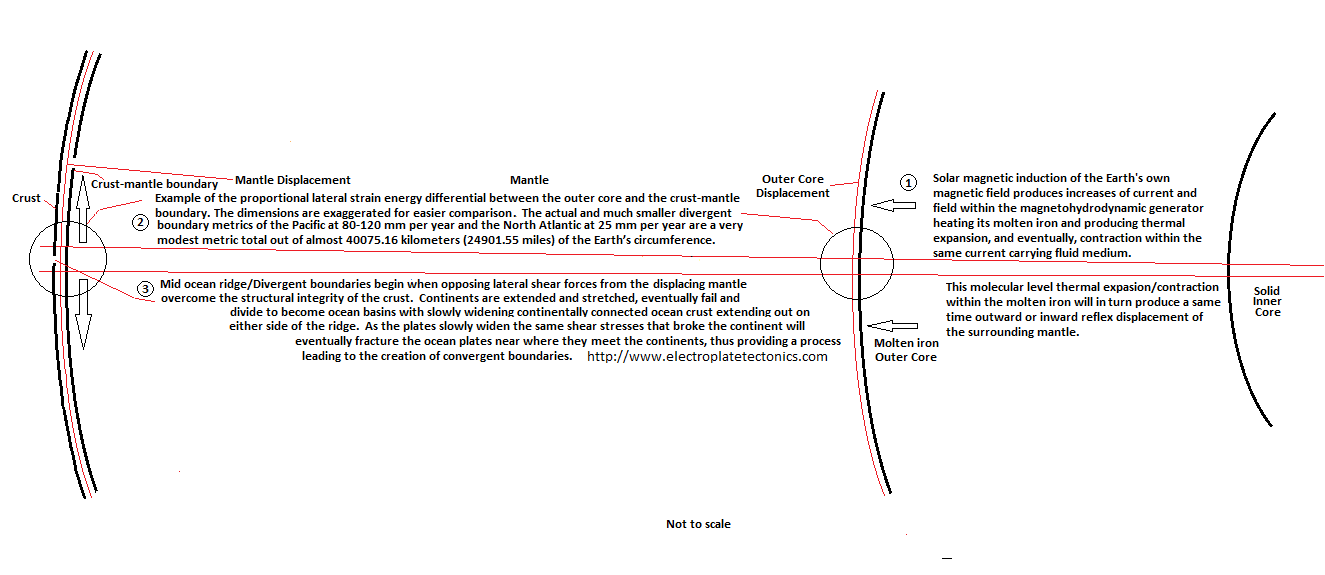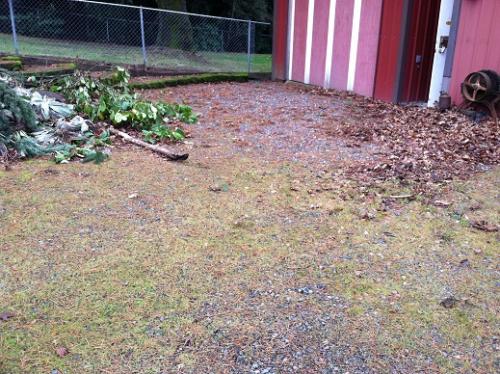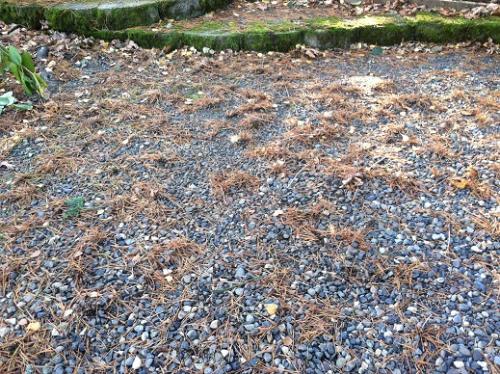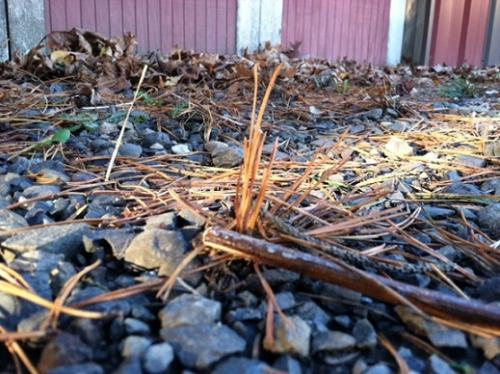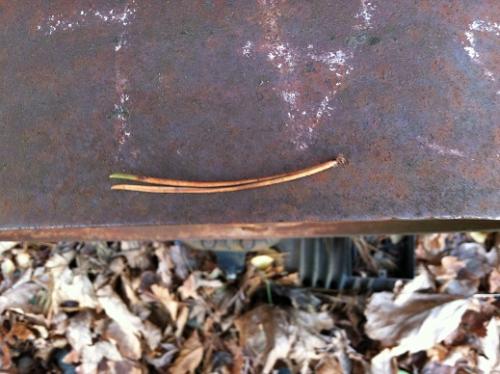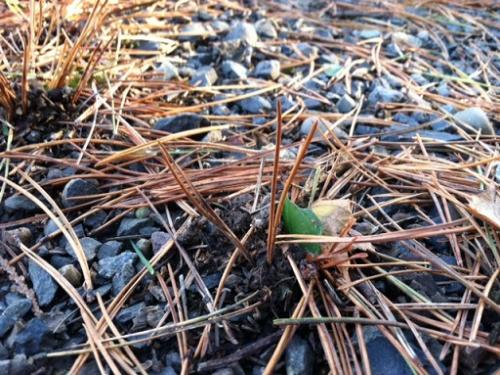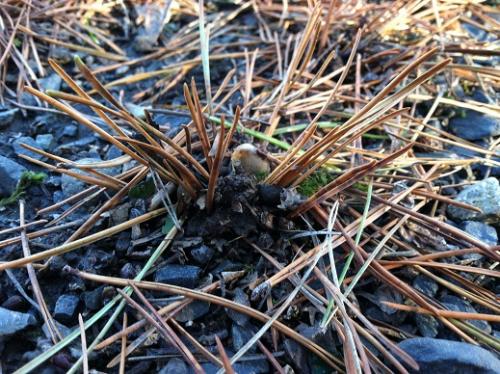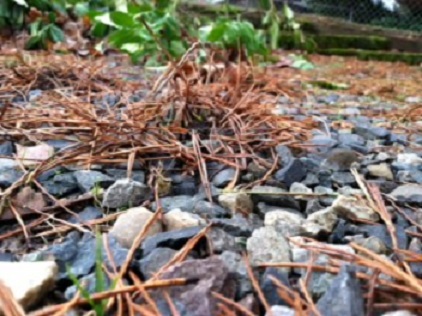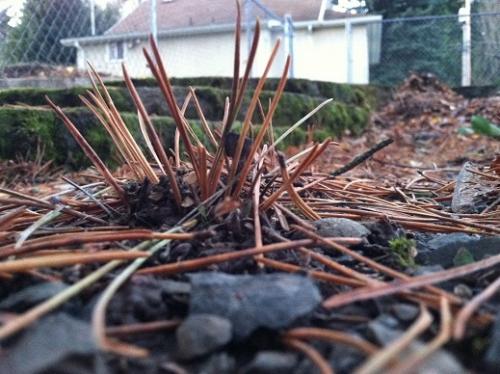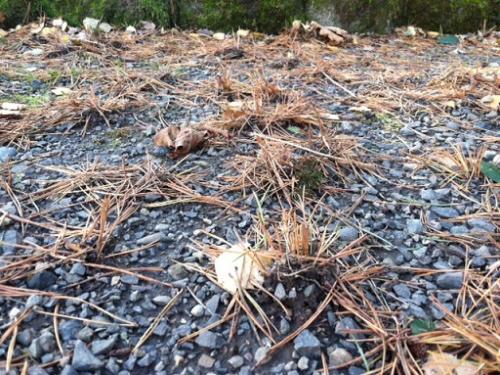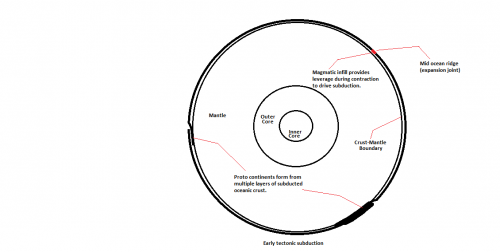-
Posts
978 -
Joined
-
Last visited
Content Type
Profiles
Forums
Events
Everything posted by arc
-
Yes, thanks Acme. I thought they looked similar also. They started before the weather became that low. When you get down and pull the top off they look just like the standard old worm pile that you are referring to. I guess I'm surprised at their adaptability.
-
Thanks to all of you. And sorry about that lousy title. That Academia.edu is to my limited opinion a really great resource. Has anyone else tried them. The team that operates it look like some kind of silicon valley start up. I will check out that one you posted, thanks StringJunky.
-
I have always been easily distracted when doing my yard work. Stopping to to watch a spider or ant, birds or squirrels or any critter that catches my eye or even ear, as it was with the two frogs that were croaking from my brush pile yesterday. We played "Marco" . . . "Polo" for 15 minutes, never did see either one of them. A mystery that I indulge in every fall takes place in the gravel area in front of my home shop. I noticed 10 or so years ago that the needles from a nearby pine tree, that have been distributed over the area, eventually will begin to cluster into piles. It can get rather windy here so the supply of these needles stays pretty consistent in the fall season. The needle piles are in the background between the brush pile and the red and white barn door. Notice there are no needle piles in the foreground. There are plenty of needles there but they are spread out evenly with no sign of piling. The very thin grass is the only apparent difference between the two areas. I initially thought it was the wind. The needles appear rather like a propeller blade. They are bifurcated and each blade has a twist to its axis. It seamed reasonable they could end up in circular piles. The real twist to this mystery (pun) was the needles started to slowly, over the weeks, to work their way into the ground in the center of the pile. And then after awhile: And then: OK, its probably not wind. Some facts: Needles are always with the points outward. As the needle count increases the dirt mound grows in proportion. None of the needles that have been in for any length of time show any sign of being chewed on. Hypothesis A. It is earthworms. They start out sort of even, extending out at night and pulling as much of the needles towards their burrow as they can. Its a hoard. They will only extend out to a point to where they can quickly pull themselves back in at the sign of danger. They are out to dominate their area of reach that may overlap into another one's area. The more you pile in your area the less your competition has to eat and the slower they will grow. The smaller and the slower get squeezed out as their hoard gets stolen by the surrounding competition who became bigger quicker. They can steal the needles right out of the top of your mound but theirs are likely out of your shorter reach. The ones on the outside edge of the area should have the greater advantage. As time goes by the space between the growing mounds becomes wider as the little guys get squeezed out. The needles are positioned "points outward" because either they can be pulled down deep into the burrow without snagging on the way down, or that the bulbous end is easier to hold on to. Hypothesis B. is its some kind of beetle or larvae. I'm betting on earthworms. This link isn't scientific but It'll work for now. http://www.homesteadingtoday.com/country-living-forums/gardening-plant-propagation/137590-earthworms-everywhere.html "I noticed that after every rain, I had pine needles and other debris sticking up out of holes in the ground. I found out it was earthworms pulling the debris down in the holes." I had always thought the worms dietary materials needed to be more decomposed and softer. These needles were being hoarded two months ago and they are still quite tough.
-
An "abstract" way to judge this would be to imagine your own measured willingness to hold onto this currency for a determined period of time. Are you using a crocodile's back to step across a stream or to ride across a river? Whereas in comparison most federal currencies would hopefully resemble an iron hulled ship. Bon Voyage!
-
If there could be any similarity it would likely be found in fractal geometry.
-

Goodbye and thanks for all the fish.
arc replied to Ophiolite's topic in Suggestions, Comments and Support
NO! . . NO! . . NO! . . NO! That is a hole that will not be filled. A geologic chasm impervious to time! -
I wanted to post on this thread when it was originally started. But it would have been considered thread high jacking because I will use my model as a solution. The thread now looks to have been sitting idle long enough that I would like to take a crack at it here. The key to subduction zones can be derived very easily using this model. This is a minimalists approach. This model simply requires that the temperature of the molten iron of the Earth's magnetic field generator will vary over million year time periods. An increase in energy will always include an increase in temperature. The temperature increase will in turn always produce thermal expansion of the molten iron. This will displace the mantle and produce strain energy in the form of heat at the crust/mantle boundary. The slow increase in the mantles circumference will require the crust to separate and adjust to release the continual tension. These tension relieving mechanisms are the mid ocean ridges located where the crust could not sustain itself against the shear forces displacing it from beneath. Eventually the magnetic field energy lowers and the outer core contracts placing the crust in compression against the most recent deposits of seafloor. The first subductions probably began during that time long ago when all that existed was proto crust beneath a shallower ocean. When the compression reached a critical level a compression ridge formed at one of the weaker divergent boundaries. As it failed under the increasing pressures it became a convergent boundary as one edge subducted under the other. As there were no continents yet the subduction was very flat, providing the genesis for the formation of the first proto continents. As the cycle repeated, the slow expansion added additional magmatic material into the divergent boundary now known as a mid ocean ridge. Then when the cycle changed to a cooler outer core the new material would leverage the opposite edge of the adjoining crust further under the overriding section. As this cycle repeated the areas of crust where large scale laminations of two and then three and so on layers of subducting crust had been placed would begin to press those lowest layers deeper into the mantle, farther than ever before. http:// en. wikipedia.org/wiki/Craton An associated class of inclusions called eclogites, consists of rocks corresponding compositionally to oceanic crust (basalt) that has metamorphosed under deep mantle conditions. Isotopic studies reveal that many eclogite inclusions are samples of ancient oceanic crust subducted billions of years ago to depths exceeding 150 km (90 mi) into the deep kimberlite diamond areas. They remained fixed there within the drifting tectonic plates until carried to the surface by deep-rooted magmatic eruptions. If peridotite and eclogite inclusions are of the same temporal origin, then peridotite must have also originated from spreading sea floor ridges billions of years ago, or from mantle affected by subduction of oceanic crust. During the early years of Earth's existence, when the planet was much hotter, greater degrees of melting at spreading oceanic ridges generated oceanic lithosphere with thick crust, much thicker than 20 km (12 mi), and a highly depleted mantle. Such a lithosphere would not sink deeply or subduct, because of its buoyancy and the removal of denser melt that in turn increased the density of the residual mantle. Accordingly, cratonic mantle roots are probably composed of buoyantly subducted slabs of a highly depleted oceanic lithosphere. These deep mantle roots increase the stability, anchoring and survivability of cratons; this makes them much less susceptible to tectonic thickening by collisions or destruction by sediment subduction. The greater depth and heat in combination with whatever water and minerals that were brought with the crust were processed into gradually more complex petrologic examples. These first layers of ocean crust that were raised from below out of that ancient ocean have long since eroded away as the newer igneous rocks came up under them from the depths below. The more complex tectonic processes that are now observed today rely still on the simple outer core thermal cycles described above. The continents have evolved into cratonic structures that are still built, moved and destroyed by the simple mechanism that the model provides. The “key” to subduction in our contemporary geology can be deduced by carefully examining the observable evidence. The Atlantic oceanic plates are connected to their adjoining continents. We are rather certain that the continents in question were once joined, so we have a rather good analog to compare other plates against. The Pacific plate is no longer connected to the Asian continent, and we could expect that a model that could explain why the Atlantic has not separated (yet) and why the Pacific has separated would be making predictions of observation quite well. The shear forces that the outward displacing mantle applies to the plates are what cause the plates to fracture. Then as these cycles continue they will establish convergent boundaries.
-
That was a very helpful explanation of the different ideas out there. Thank you for that. I've spent my fair share of time contemplating this subject. I have to simplify these concepts as much as I can to maintain even a basic picture in my mind as to what is going on. I like the simple concept of a rudder on a boat or an airplane, both are rather useless unto themselves and only redirect flow and in turn provide movement to themselves when utilized in conjunction with a structural frame of some sort. They are at a basic level a levering device. Horizontal planes on submarines are wings but do not in themselves posses anything more than what a vertical rudder provides, an angled surface that redirects the flow of a force provided by movement between the planed surface and the fluid. The silent partner in this is the structural frame that provides the fulcrum, so to speak, that the advantage provided by the simple planed surface or wing can be advantaged against. Whatever the actual glide that some of those early pre Wright Brothers contraptions accomplished, they were likely entirely dependent on the redirection of force that was balanced between two sets of planed surfaces (wings) separated by a long structural frame. Compare this to a true flying wing that unto itself, without a separate fuselage structure, provides its own stability and lift. A true and accurate representation of the characteristics of lift albeit without the versatility and greater stability of the separate control surfaces that a conventional fuselage provides.
-

How/Where did Grasslands come from?. A
arc replied to dreamer.'s topic in Ecology and the Environment
No problem. Its fun to speculate, but you have to try to keep it as tight as you can or it gets hard to maintain consanguinity. The people that live in the warmest regions do have the lowest life expectancy rates. This can be due to diseases that propagate well in hot humid environments or simply that it is historically very difficult to establish large, safe and well organised societies in very hot and humid landlocked areas near the equator. They seem to have a rather short run at it and then fall into social and or environmental decline. The Maya for example, it may have been environmental changes that brought them into their decline. Smaller groups have done best along the coastal margins where food is more abundant, the interiors where most grasslands occur, are often too dry for grassland and boarder on being deserts if not one already. They are prone to change as glacials and interglacials come and go, changing rain patterns for long periods. The man made dust bowl in the 1930's almost turned the American grasslands into desert when the exposed soil, due to over plowing, was blown away as far as the Atlantic ocean and even Africa. South Africa probably lacks the soil and the continual supply of loess that in conjunction with the grass hold the moisture over the long dry periods between rains. It takes very specific circumstances to develop grasslands; an environment that allows the accumulation of the airborne loess within a existing grassland that will in turn hold on to it by constantly growing up through the accumulations, incorporating it into the growing soil mass under the grass' root mat, and the seasonal rains that are wetter than that of deserts but lower than that associated to forests. -

How/Where did Grasslands come from?. A
arc replied to dreamer.'s topic in Ecology and the Environment
Hi dreamer, I'm far from an expert in this but there are clues to these environs that can be ascertained when closely compared to the surrounding regions. The great American grasslands are located on the leeward side of the Rocky Mountains that are high enough to limit great amounts of rainfall, the mountains take most of this rain as snow. So, grasslands are dependent and controlled by the amount of precipitation they receive, which is too low for extended periods for trees to establish forests. This means their rainfall is in turn highly seasonal in nature. They are between a forest and a desert in rainfall amounts. And additional to that, the grasses are able to retain the restricted amount of moisture they do receive because they have dense root mats that help control the soils amount of moisture evaporation and wind erosion. And also the grassland in many locations are overlaying large deposits of loess, a wind blow silt from far away locations that covered vast areas of Asia and the American Midwest during the past glacial periods that occurred periodically over the last several million years. The grasslands were growing as these layers were accumulating making these areas vast depositories of valuable top soil. edit: spelling. -
-
I have only been reading research papers online for a couple of years now. (And none before that anywhere else). The pay walls were getting to be a constant disappointment. See something promising and then bang! Pay wall. I found a site called Academia.edu with what looks like endless papers to read for free. I've read several geology related papers so far and they were wonderful, over my level of understanding in too many instances, but really good. They are by university faculty, the one I read tonight is an Emeritus. Has anyone used them as a source or published something through them?
-
Oh yes, I too enjoy the classics. I am drawn to that first half of the last century myself. No matter how many times over the years I am reacquainted with the same material from various sources I will again indulge in it, as if some glutton of war and suffering. My inability to comprehend it in its insane entirety is what I think draws me to it. Those who say they do are deceiving themselves . . . . Dammit! Ophiolite you pulled me right into it like some crack dealer!
-
What year would you designate a cut off point? Nothing this century? Or maybe even a rolling 20 - 25 year black out period. Then the emotions can settle down a little and the politics can be in a more historical context. Hmm . . . . OK . . . . How about a 50 year black out?
-
They did so to the best of their abilities and their discipline to the scientific process. These are their calculations on their propellers. http://www.wright-brothers.org/Information_Desk/Just_the_Facts/Engines_&_Props/Wright_Engine_&_Props_images/1903-Wright-Propeller-notebook-&-calculations.jpg "In early 1903, before designing their airplane propellers, the Wrights first conducted wind tunnel experiments to determine how propellers worked. These are some of the notes from their tests." "They were also remarkably efficient, converting 66 percent of the mechanical energy from the motor into thrust." The Wright's work began on a foundation of previous work by many scientists including that of George Cayley, (27 December 1773 – 15 December 1857) an English engineer and one of the most influential people in aeronautical history. Believed by many to be the farther of aeronautical sciences and the underlying principles of flight. And also Samuel Langley the American astrophysicist and astronomer who built and flew steam powered model airplanes. One of which flew 1.2 kilometers in 1891. It really is about the scientific discipline.
-
The distinction you need to understand by the example that you have provided is that even though only one of the Wright brothers completed high school they successfully accomplished their goal of powered flight only through their strict adherence to the scientific process. The development of flight, that is the scientific discovery of the characteristics of flight, was systematically revealed over several years through careful experimentation. They first invented, through that careful experimentation, the instruments to study flight. They built the first wind tunnel that would later test over 200 scale wing configurations, one of which actually flew at Kitty hawk Dec. 17 1903. It was their discipline to the scientific process that enabled their success. To discover human flight and not be killed while doing it was a direct consequence of the control that a diligent and thorough scientific study can produce. They flew their Wright glider one year earlier and accomplished their goals for tethered flights and returned home to Ohio. They carefully went over their data and returned the next year for their first powered flight. Careful, systematic accumulation of knowledge allowed human flight. While the Wrights diligently experimented some of their fellow seekers of flight died or were crippled by ill conceived notions of wing design based on nothing more than assumptions. Sometimes simply copying the shapes and even feathers of bird's wings or even the distinct shape of a bat's in some instances. So, do you feel you have done due diligence to the scientific process in developing your idea? Or, like those other hopeful flyers, have you just made some rather ill conceived notions about similarities between two completely different and unrelated aspects of physics and biology? Will your idea soar like the Wright flyer or will it plunge to the ground like some guy's feathered bird suit? Ideas are a dime a dozen, they are just the raw unfinished form of something that could take years of scientific rigor to finish into a valuable contribution. But most important, they must be based on a viable concept to begin with.
-
And that is why I will read your posts even when I wasn't even following the particular thread. You always have something worth the time to stop and look. But in time they may outnumber you by a wide margin when word gets out, you may become quite busy.
-
Very nice. You are really developing a into a skilled composer.
-
You were only off by 43 days for what looks like an example from one of the classic conspiracy theories. This does not bode well for a forum that would be open to wild conjecture. What if America didn't pretend to get bombed by Japan? Could you require that proper evidence be shown to support any and all such claims? And who would want to wade through the mountain of crap that is available on line that could be offered as such? This will degenerate quickly without some kind of filter.
-

Why do so many human endeavors get labeled "unnatural"?
arc replied to Phi for All's topic in Other Sciences
Unnatural is in the eye of the beholder. The steam engine, automobile and the airplane were all greeted with this sentiment by a sizable portion of their time period's populations. It is at its most basic a fear of the unknown. When the indigenous Inhabitants of the Americas saw the first iron suited man growing out of the back of a horse they undoubtedly viewed this as an unnatural aberration. It is a common sentiment by many to think everything that was before the beginning of the modern industrial era was greeted in a rather practical "it will be good" attitude. But would we assume that the archers centuries ago didn't view the crossbow as an unnatural contraption, and then in true order, the crossbowmen felt the same when that unsportsmanlike gunpowder arrived and made body armor for centuries after useless. All so unnatural . . . for the time period. I'm sure the first chariots that thousands of years before had cut through the opposition's lines of foot solders were considered in the same vein. The printing press' sudden replacement of the laboriously slow process of making manuscripts by hand would have undoubtedly been viewed as the most literal (pun intended) example of an unnatural, and to the older scribes, unholy change to the natural order of things. I remember when older office workers were totally overwhelmed by these newfangled computers that all their younger coworkers were off and running with. People fear the unknown and its most common derivative; change as an often unwelcome and perceived unnatural occurrence. And it is change that science and technology has consistently delivered in great measure over these last couple of centuries that we modern consumers have delineated as the before and the after - of the invention of the idea - of an unnatural state of human existence. -
Science + History? That would be any thread regarding geology in Earth sciences.
-

Why an Airplane Flies (Bernoulli's Principle vs. Newton's Third Law)
arc replied to antimatter's topic in Physics
"the air will descend and lift the balloon up." Talos, Sure, and when a rock sinks the water rising past it pushes the rock down. The air moving around a car is pushing it forward. An elevator works like the balloon. And now, thanks to you I'm totally confused as to how a sailboat works! Anyway, I'm still waiting for your response to those two other posts. -

Why an Airplane Flies (Bernoulli's Principle vs. Newton's Third Law)
arc replied to antimatter's topic in Physics
Talos, you never addressed my questions I posed to you in post #93 - http://www.scienceforums.net/topic/31491-why-an-airplane-flies-bernoullis-principle-vs-newtons-third-law/page-5#entry837138 I think that you still need to address that post because you are claiming a mechanism for lift that my example directly refutes. You claim; "When the smoke laden air has become static, release your balloon from floor level and watch the smoke laden air descend around it due to gravity*, while simultaneously moving underneath the balloon and rising as it lifts the balloon up in an equal and opposite reaction." "simultaneously moving underneath the balloon and rising as it lifts the balloon up" In post #93 I said; "If we had a clear plastic cylinder 50 meters high containing water, it would have approximately 5 bars of pressure at its base and half that at 25 meters, and thus can effectively graduate the hydrostatic pressures so forth for its entire height. To start with, we will lower a weighted balloon into the empty cylinder, the balloon is ballasted to have a neutral buoyancy at approximately 2.5 bars at 25 meters in depth. Next, we will slowly fill the cylinder from below with water from a measured source. I believe the balloon will not lift off the cylinder’s bottom until the water reaches above 25 meters. Do you agree? When the water reaches 26 meters the balloon will be one meter off the bottom. Do you agree? Do you believe the water moves down to raise the balloon? As water is added the balloon will rise in proportion, this is neutral buoyancy. If the cylinder was full to the top and the balloon was released from the bottom it would rise to the 25 meter level and stop. To do so the water above it will have to move down past the balloon as it rises, I think this detail is over complicating your understanding of this process. For example, when something sinks the water moves past the object. Is this water pushing the object down?" Talos, you are confusing the displaced volume that must move down as the balloon goes up as being the mechanism of lift. Gravity acting on the surrounding volume is providing the lift through pressure, it is squeezing the balloon (the lighter gas inside) and moving it upwards to a constantly lower state of pressure. Displacement of the surrounding volume by the lighter gas inside the balloon initiates and determines the degree to which the force will be provided. Lift of the balloon will not be provided without displacement by a lower density of equal or greater volume, but displacement is not the force that provides lift. Hydrostatic pressure of the surrounding volume through gravity is. I could have two balloons of identical weight and volume. But one is made to have a smooth outside surface, the other's surface is made to be very rough and resistant to air flow. Do you think they will rise at the same rate? The pressure that is raising the balloons from below is being opposed by the resistance that the rougher surface has on the downward flow of the displaced air as it moves past the rougher surface, thus slowing the balloon's rise. But its lift capacity remains the same due to the pressure and the gravity that provides it. This shows that you are incorrect and the force that provides the lift is not the air that is moving down from above. The air "simultaneously moving underneath the balloon and rising as it lifts the balloon up" is simply a secondary reaction to the force that is raising the balloon from below. edit; terminology -
starlarvae, the methodology that natural selection operates by is not some obtuse convoluted idea from someone's imagination 150 years ago. It is at its most fundamental and basic form something that you do every day of your life. You probably own a car. Do you know why it has a motor instead of a horse tied to its front end? It is because the same methodology that selected changes in the evolution of life selected a motor over a horse for the locomotion of a car. In the latter case the "selection" methodology utilized the unnatural mechanism of consumer choice, buyers preferred motors over horses. And then the "unnatural selection" mechanism continued on over the next century to choose starters over hand cranks, steel wheels over wood, electric lights over acetylene lights, and so on until today. Why does life evolve? It has no choice, you yourself make selections for not only what products consumers will have to choose from in the future but even what individual features or conveniences they will have, simply by buying something today. Every seemingly insignificant choice you make influences future events by increasingly greater significance the farther ahead that the observed selection projects. The selection methodology forms the basis of modern societies. Their democracies, economies, cultural changes, educational systems and business practices all are mirrored on the natural selection methodology. You are it and it is you. YOU CANNOT ESCAPE IT!

